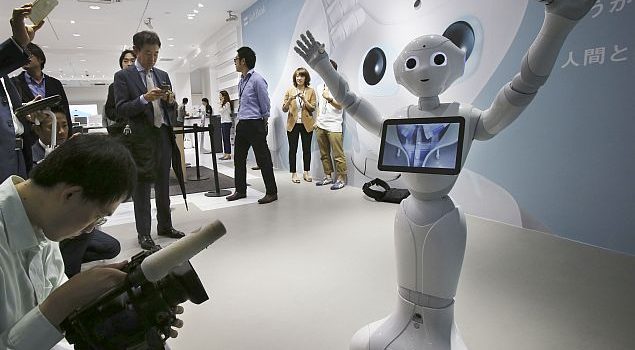But what about privacy?
Biometrics is quickly becoming a commonplace technology. Biological identifiers like thumbprints, facial structures, and even voices are now commonly used to confirm your identity.
ExpressVPN’s piece makes it clear that, whether you’re logging into your favorite mobile device or giving a task to your virtual assistant, chances are you’re using biometric technology daily.
In a world relying more on artificial intelligence, robotics, and biometrics, it’s only expected that these spheres will intersect.
How Biometrics are Used in Robotics
We’re seeing robotics equipped with biometric technology cropping up in places where security is high and time is of the essence. For instance, in some airports, biometrics are used as identification when boarding flights. You might also find biometrics technology — for example, iris scanning — used to confirm identity before qualifying exams or when arriving at work in the morning.
In these instances, the people involved have previously shared their biometric data, and they’re willing participants in having it collected and processed. However, this is not always the case when it comes to biometrics. Sometimes people are unaware — or unwilling — to have their data collected or processed. Security cameras and drones may capture biometrics this way, often without permission.
There’s a big difference between those who are willing to share their biometrics and those who aren’t. But, there’s actually not a big difference in the accuracy of biometric data collected from the two groups. In fact, there’s even discussion of using robotic dogs equipped with facial recognition technology to assist police forces in the identification and capture of wanted suspects.
The Challenges of Collecting Biometric Data
It may not be that simple to fully embrace robotics with biometric technology. That’s partly because biometrics is not yet a perfected science, especially when it comes to facial recognition. Should a face be obscured — by a mask, sunglasses, an oversized hat, or even just an object in front of it — it’s simply impossible for that data to be captured and processed. Unfortunately, with the right tools, it’s also possible to fool facial recognition technology.
These problems are not as much of an issue when a subject voluntarily shares biometric data. However, it certainly is an issue for biometrics used for security purposes. Besides that, there’s also the established fact that biometrics show bias. Those who belong to minority groups, are women, or are elderly are more likely to be misidentified using facial recognition technology.
In today’s current landscape, it’s also become quite clear that the collection of biometrics risks violating people’s privacy. When this happens, businesses and individuals open themselves up to lawsuits. Just last year, Facebook was forced to settle outside of court for its use of facial recognition technology in its photo-tagging feature. More recently, the state of Texas followed up with a lawsuit of its own against Meta, the parent organization of Facebook.
Beyond the collection of biometrics, securely storing biometrics has also proven to be a challenge. Much of the robotic equipment that uses biometrics relies on cloud-based storage to keep track of biometric data. These databases can be vulnerable to breaches, and biometrics may be stolen. When this happens, the consequences are much greater than when a traditional account or password has been compromised.
The Future of Robotics and Biometrics
It’s clear that both robotics and biometrics will have a prominent presence in the future. Navigating how they can be properly implemented, and reducing the risk of misidentification, will pave the way for them. Of course, finding — and respecting — the line between what’s public and what is, indeed, private will be critical to their successful implementation.


